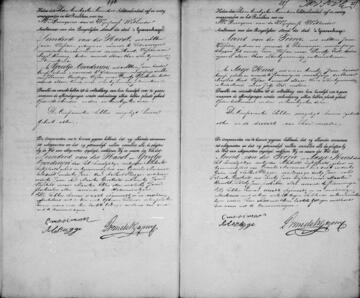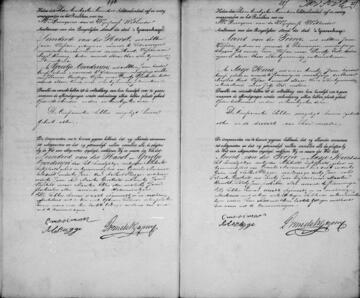Family tree Grootendorst » Kniertje van der Harst (1874-????)
Personal data Kniertje van der Harst
Source 1- She was born on July 16, 1874.
- A child of Leendert Johannes van der Harst and Kniertje de Graaf
Household of Kniertje van der Harst
Timeline Kniertje van der Harst
This functionality is only available in Javascript supporting browsers.
Click on the names for more info.
Symbols used:  grandparents
grandparents
 parents
parents
 brothers/sisters
brothers/sisters
 children
children
 grandparents
grandparents
 parents
parents
 brothers/sisters
brothers/sisters
 children
children
Sources
- Bal Web Site, Maria Bal, Kniertje van der Harst, March 5, 2017
Toegevoegd via een Smart Match
Stambomen op MyHeritage
Familiesite: Bal Web Site
Familiestamboom: 305559981-1
Historical events
Birthday July 16, 1874
- The temperature on July 16, 1874 was about 19.9 °C. The air pressure was 3 kgf/m2 and came mainly from the north-northeast. The airpressure was 77 cm mercury. The atmospheric humidity was 59%. Source: KNMI
- Koning Willem III (Huis van Oranje-Nassau) was from 1849 till 1890 sovereign of the Netherlands (also known as Koninkrijk der Nederlanden)
- From July 6, 1872 till August 27, 1874 the Netherlands had a cabinet De Vries - Fransen van de Putte with the prime ministers Mr. G. de Vries Azn. (liberaal) and I.D. Fransen van de Putte (liberaal).
- From August 27, 1874 till November 3, 1877 the Netherlands had a cabinet Heemskerk - Van Lijnden van Sandenburg with the prime ministers Mr. J. Heemskerk Azn. (conservatief) and Mr. C.Th. baron Van Lijnden van Sandenburg (AR).
- In the year 1874: Source: Wikipedia
- The Netherlands had about 4.0 million citizens.
- March 15 » France and Vietnam sign the Second Treaty of Saigon, further recognizing the full sovereignty of France over Cochinchina.
- July 1 » The Sholes and Glidden typewriter, the first commercially successful typewriter, goes on sale.
- July 8 » The Mounties begin their March West.
- July 14 » The Chicago Fire of 1874 burns down 47 acres of the city, destroying 812 buildings, killing 20, and resulting in the fire insurance industry demanding municipal reforms from Chicago's city council.
- July 23 » Aires de Ornelas e Vasconcelos is appointed the Archbishop of the Portuguese colonial enclave of Goa, India.
- November 7 » A cartoon by Thomas Nast in Harper's Weekly, is considered the first important use of an elephant as a symbol for the United States Republican Party.
Same birth/death day
- 1870 » Lambert McKenna, Irish priest, lexicographer, and scholar († 1956)
- 1871 » John Maxwell, American golfer († 1906)
- 1872 » Frank Cooper, Australian politician, 25th Premier of Queensland († 1949)
- 1872 » Roald Amundsen, Norwegian pilot and explorer († 1928)
- 1880 » Kathleen Norris, American journalist and author († 1966)
- 1882 » Violette Neatley Anderson, American judge († 1937)
About the surname Van der Harst
- View the information that Genealogie Online has about the surname Van der Harst.
- Check the information Open Archives has about Van der Harst.
- Check the Wie (onder)zoekt wie? register to see who is (re)searching Van der Harst.
The Family tree Grootendorst publication was prepared by Eldert Grootendorst.
When copying data from this family tree, please include a reference to the origin:
Eldert Grootendorst, "Family tree Grootendorst", database, Genealogy Online (https://www.genealogieonline.nl/stamboom-familie-grootendorst/I507572.php : accessed October 31, 2024), "Kniertje van der Harst (1874-????)".
Eldert Grootendorst, "Family tree Grootendorst", database, Genealogy Online (https://www.genealogieonline.nl/stamboom-familie-grootendorst/I507572.php : accessed October 31, 2024), "Kniertje van der Harst (1874-????)".

